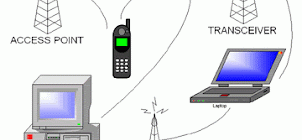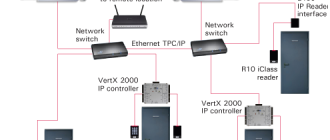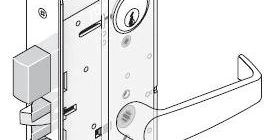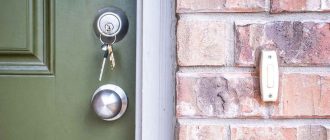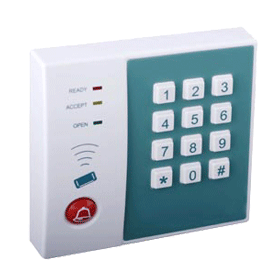
All About Proximity Access Control Systems
In today’s modern world, security is of utmost importance. Whether you are protecting your home, office, or any other facility, having a reliable access control system is essential.
One such system that you should consider is a proximity access control system. This cutting-edge technology allows you to secure your premises with ease and convenience.
So, what is a proximity access control system all about? It is a type of security system that uses proximity cards or key fobs to grant or deny access to authorized individuals. These cards or fobs contain embedded chips that emit radio frequency signals, which are read by proximity card readers.
With a proximity access control system, you can ensure that only authorized personnel can enter your premises. This eliminates the need for traditional keys, which can be easily duplicated or lost.
Moreover, proximity access control systems offer various features and benefits. They can be integrated with other security systems, such as CCTV cameras and alarms, to provide a comprehensive security solution. They also allow you to track and monitor access, providing you with valuable data on who entered and when.
In conclusion, if you are looking for a reliable and convenient way to secure your premises, a proximity access control system is the way to go. With its advanced features and benefits, you can have peace of mind knowing that only authorized individuals can access your facility.
What is Proximity Access Control?
Proximity access control is a revolutionary technology that allows users to gain access to a secured area without the need for physical contact. The system utilizes a small electronic device, typically in the form of a card or a key fob, that emits a unique identification code. When this device is brought within a certain proximity of a card reader or a door lock, the code is transmitted and verified, granting or denying access based on the permissions granted to the user.
Proximity access control systems are widely used in various settings, including offices, residential buildings, educational institutions, hospitals, and government facilities. They provide a seamless and secure way to manage and monitor access to restricted areas, ensuring only authorized individuals can enter.
One of the key advantages of proximity access control is its convenience. Users do not need to insert a key or remember a combination; they simply need to present their proximity card or key fob near the reader or lock. This eliminates the hassle of carrying multiple keys and reduces the risk of lost or stolen keys compromising the security of the premises.
In addition to convenience, proximity access control systems offer enhanced security features. The unique identification codes emitted by the proximity devices are difficult to replicate, making them an effective deterrent against unauthorized access attempts. Furthermore, the system can generate detailed access logs, allowing administrators to track and analyze entry events.
| Convenient and user-friendly |
| Enhanced security and deterrence against unauthorized access |
| Ability to track and analyze access events |
| Reduced risk of lost or stolen keys compromising security |
In conclusion, proximity access control systems offer a modern and effective solution for managing access to secured areas. With their convenience, enhanced security features, and ability to track access events, they are an ideal choice for organizations looking to ensure the safety and security of their premises.
Why Proximity Access Control is Important
Proximity access control systems provide an essential level of security for both residential and commercial properties. These systems allow authorized individuals to gain access to specific areas or buildings using a card or key fob that emits a unique proximity signal. This signal is received by a reader, which verifies the user’s identity and grants or denies access accordingly.
One of the main benefits of proximity access control is the level of control it provides. With these systems in place, property owners and managers can restrict access to certain areas or limit access to specific individuals. This ensures that only authorized personnel can enter sensitive areas, such as server rooms or storage areas containing valuable assets.
Proximity access control systems also offer convenience and ease of use. Users no longer need to carry around multiple keys or remember complex combinations. Instead, they simply need to carry their proximity card or key fob, which can be easily scanned or swiped to gain access. This simplifies the process of entering and exiting buildings or areas, saving time and reducing frustration.
Another important aspect of proximity access control is the ability to monitor and track access activity. These systems often come with software that allows property owners or managers to generate reports on who has entered specific areas and when. This can be invaluable for security purposes, as it allows for the identification of potential security breaches or irregularities.
Overall, proximity access control systems provide an effective and efficient way to control access to buildings or specific areas within a property. They offer a high level of security, convenience, and the ability to monitor access activity. Investing in a proximity access control system can help to protect valuable assets, ensure the safety of individuals, and provide peace of mind for property owners and managers.
Benefits of Proximity Access Control Systems
Proximity access control systems offer numerous benefits for both individuals and organizations. These systems utilize advanced technology to provide a secure and efficient method of granting and managing access to restricted areas. Here are some of the key benefits of proximity access control systems:
- Enhanced Security: Proximity access control systems offer a higher level of security compared to traditional lock and key methods. With these systems, access is granted through the use of proximity cards or key fobs, which are much more difficult to duplicate or tamper with. This helps to prevent unauthorized access and protect valuables and sensitive information.
- Convenience: Access control systems eliminate the need for traditional keys, which can be easily lost or misplaced. Instead, individuals can use proximity cards or key fobs that are easy to carry and use. This makes it more convenient for employees and authorized personnel to access restricted areas quickly and efficiently.
- Control and Flexibility: Proximity access control systems provide a high level of control and flexibility when it comes to managing access to specific areas or resources. Authorized personnel can be granted different levels of access based on their roles and responsibilities, allowing for customized and scalable security solutions.
- Monitoring and Audit Trails: These systems offer the ability to monitor and track who accesses specific areas and at what times. This can be particularly useful in the event of a security breach or unauthorized access, as it allows for detailed audit trails and forensic analysis. It also serves as a deterrent to potential intruders.
- Cost Savings: While proximity access control systems may require an initial investment, they can result in long-term cost savings. With these systems, the need for rekeying locks or replacing lost keys is eliminated, reducing maintenance and administrative costs. Additionally, the ability to easily revoke access privileges reduces the risk of security breaches and associated costs.
In conclusion, proximity access control systems offer enhanced security, convenience, control, monitoring capabilities, and cost savings. Implementing these systems can greatly improve the overall security and efficiency of any organization.
Enhanced Security
When it comes to access control systems, security is of utmost importance. Proximity access control systems offer enhanced security features that help protect your property and assets.
With proximity access control systems, you have the ability to restrict access to certain areas, ensuring that only authorized individuals can enter. This eliminates the risk of unauthorized personnel gaining entry and helps prevent theft and vandalism.
Additionally, proximity access control systems can be easily integrated with other security measures, such as surveillance cameras and alarms, to provide a comprehensive security solution. This allows for real-time monitoring and quick response to any security breaches.
To further enhance security, proximity access control systems can also provide audit trails, which allow you to track and record all access attempts. This information can be crucial in investigating incidents and identifying potential security vulnerabilities.
Moreover, proximity access control systems offer the convenience of centralized control. You can easily manage and modify user access rights from a central console, ensuring that only authorized individuals have access to specific areas at any given time.
Overall, proximity access control systems provide all the necessary features to enhance security and protect your property and assets from unauthorized access. Whether it’s for a residential building, office space, or any other facility, these systems are a reliable and effective solution.
Convenience and Ease of Use
Proximity access control systems are all about convenience and ease of use. These systems provide a seamless and efficient way for individuals to gain access to secure areas without the need for physical keys or access cards. With proximity access control systems, individuals can simply present their authorized token, such as a key fob or badge, to a reader, and the system will grant or deny access based on the permissions assigned to that person.
One of the key advantages of proximity access control systems is the elimination of the need for individuals to carry multiple keys or access cards. Instead, they can use a single token that can be easily carried in a pocket or on a keychain. This not only reduces the chances of losing or misplacing keys or cards, but it also simplifies the process of granting or revoking access. If an employee leaves the organization or a key is lost, it’s as simple as deactivating their token in the system, rather than having to rekey locks or replace access cards.
Proximity access control systems also offer enhanced security features. The tokens used in these systems are typically encrypted and cannot be easily duplicated, reducing the risk of unauthorized access. In addition, the system can provide an audit trail of access events, allowing organizations to track who accessed certain areas and when. This can be useful for security purposes, as well as for compliance with regulatory requirements.
Overall, proximity access control systems provide a convenient and user-friendly solution for controlling access to secure areas. With their ease of use, enhanced security features, and the ability to simplify access management, these systems are becoming increasingly popular in a wide range of industries, from office buildings and hospitals to educational institutions and government facilities.
Improved Monitoring and Reporting
In addition to providing secure access control, proximity access control systems offer improved monitoring and reporting capabilities. With these systems, you can have a comprehensive view of all access activities within your organization.
By using proximity access control cards or badges, each entry or exit is logged, allowing you to track who accessed specific areas and when. This level of visibility ensures that only authorized personnel are granted access to sensitive areas, enhancing overall security.
Furthermore, proximity access control systems can generate detailed reports that aid in auditing and compliance efforts. These reports provide valuable insights, such as the total number of access attempts, successful and failed attempts, and any unauthorized access attempts.
With such comprehensive reporting capabilities, you can easily identify any patterns or irregularities in access activities and take appropriate actions to address them. This proactive approach to security helps prevent potential breaches or incidents.
In summary, proximity access control systems not only provide secure access to your premises but also offer improved monitoring and reporting functionalities. With these systems in place, you can have peace of mind knowing that you have full control over who can access your organization’s facilities.
Cost Savings
Implementing a proximity access control system can result in significant cost savings for businesses of all sizes. By utilizing advanced technologies for controlling access to your premises, you can decrease expenses associated with traditional key-based systems and increase overall security.
With a proximity access control system, there is no need for costly key replacements or rekeying of locks when an employee leaves or loses their keys. Instead, access credentials can be quickly disabled or reprogrammed, saving both time and money.
Additionally, the use of proximity access control systems eliminates the need for physical keys, which can be easily lost or duplicated. This reduces the risk of unauthorized access to your facility and prevents the need for costly locksmith services.
Furthermore, the ability to track and monitor access activity provides valuable insights and helps prevent incidents such as theft or unauthorized access. By leveraging the control and data provided by a proximity access control system, businesses can proactively manage security risks and reduce potential losses.
In summary, implementing a proximity access control system not only enhances security but also offers considerable cost savings by eliminating the need for traditional key-based systems and mitigating potential security risks associated with lost or duplicated keys.
Integration with other Systems
Proximity access control systems are not standalone solutions. They can be seamlessly integrated with other systems to provide enhanced security and convenience. By integrating proximity access control systems with other systems, you can centralize the management of different security features and streamline your operations.
One of the key advantages of integrating proximity access control systems is the ability to integrate them with CCTV systems. By doing so, you can easily link recorded video footage with access events, enhancing security and enabling quick identification of any unauthorized access attempts.
Furthermore, proximity access control systems can be integrated with time and attendance systems. This integration allows for accurate tracking of employee attendance, as access events can be linked to the corresponding time and attendance records. This not only simplifies payroll processing but also provides valuable data for HR and management purposes.
Another important integration option is with alarm and notification systems. By integrating proximity access control systems with alarm systems, you can ensure that any unauthorized access attempts trigger immediate alerts. This enables swift response and minimizes the risk of security breaches.
Lastly, proximity access control systems can also be integrated with building management systems. This integration allows for centralized control and monitoring of various building functions, including lighting, HVAC, and elevator access. By linking these systems together, you can achieve greater energy efficiency and enhance the overall building experience for occupants.
In conclusion, the integration of proximity access control systems with other systems offers numerous benefits, including improved security, streamlined operations, and enhanced convenience. By leveraging the capabilities of these systems, you can create a comprehensive and efficient security infrastructure.
Key Features of Proximity Access Control Systems
Proximity Access Control Systems offer an advanced and secure solution for managing access to restricted areas. Here are some key features that make these systems stand out:
1. Convenience: Proximity access control systems provide a convenient way for authorized personnel to access secured areas without the need for keys or physical contact. Users can simply wave or hold their proximity card or key fob near the reader to gain access quickly and easily.
2. Enhanced Security: These systems are designed to ensure high-level security by using encrypted data and advanced technology. Proximity cards or key fobs are uniquely encoded, making it difficult for unauthorized individuals to duplicate or tamper with them. Additionally, administrators can easily revoke access privileges in case of lost or stolen cards, enhancing overall security.
3. Integration: Proximity access control systems are compatible with a wide range of other security systems, such as CCTV cameras and alarm systems. This integration allows for a more comprehensive security approach, providing seamless control and monitoring of access to the facility.
4. Customization: These systems offer flexible programming options, allowing administrators to customize access settings based on individual needs and preferences. Time-based access restrictions can be set to limit access during specific hours or days, and different access levels can be configured for various personnel or departments.
5. Audit Trail: Each access event is logged and recorded in the system, creating a detailed audit trail. This feature enables administrators to track and monitor access activity, helping to identify any security breaches or suspicious behavior.
6. Scalability: Proximity access control systems can easily be expanded or scaled to accommodate changing security requirements. Whether it’s adding new access points or increasing the number of users, these systems can adapt to the evolving needs of your facility.
In conclusion, proximity access control systems offer a secure, convenient, and flexible solution for managing access to restricted areas. With their enhanced security features and integration capabilities, these systems provide peace of mind and help protect your facility from unauthorized access.
Proximity Cards or Key Fobs
One of the key components of proximity access control systems are proximity cards or key fobs. These small, portable devices provide a convenient and secure way for individuals to gain access to secured areas.
Proximity cards are similar to traditional identification cards, but they have an embedded chip or antenna that allows them to communicate with proximity readers. When a proximity card is held within close proximity of a reader, the reader picks up the card’s unique identifier and verifies if the person holding the card has the appropriate access rights.
Key fobs, on the other hand, are small keychain devices that have the same functionality as proximity cards. They are designed to be carried on a keychain, making them easily accessible and convenient for users. Key fobs often have a button or a small touch-sensitive area that can be pressed or touched against a proximity reader to transmit the necessary information.
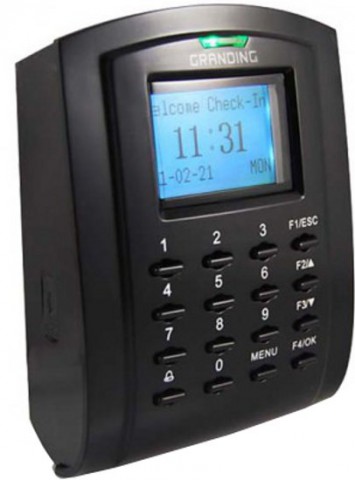
One of the advantages of using proximity cards or key fobs is the ease of use. Individuals simply need to hold their card or key fob in close proximity to a reader, eliminating the need for physical contact or insertion into a reader. This makes the process quick and efficient, especially in high-traffic areas.
Proximity cards and key fobs can also be easily programmed or deactivated, allowing for quick and flexible access management. If a card is lost or stolen, it can be quickly deactivated, preventing unauthorized access. New cards or key fobs can also be easily programmed with the necessary access rights and added to the system.
In addition, proximity cards and key fobs provide a higher level of security compared to traditional keys or swipe cards. The communication between the card or key fob and the reader is encrypted, making it difficult for unauthorized individuals to clone or counterfeit the device. This provides peace of mind, knowing that only authorized individuals can gain access to secured areas.
Overall, proximity cards and key fobs are an essential component of proximity access control systems. They provide a convenient, secure, and efficient way for individuals to gain access to secured areas, while also offering flexibility and enhanced security measures. Whether you choose proximity cards or key fobs, you can be confident that your access control system is reliable and effective.
Access Control Panels
Access control panels are an integral part of proximity access control systems. These panels serve as the central hub for managing and controlling access to secured areas. They provide a secure and efficient way to monitor and control who has access to various entry points.
Access control panels are equipped with advanced technology and sophisticated features to ensure maximum security and convenience. They are designed to handle multiple access points, such as doors, gates, elevators, and parking lots, making them suitable for various types of facilities.
One of the key benefits of access control panels is their ability to integrate with other security systems, such as video surveillance and alarm systems. This integration allows for a comprehensive security solution, offering a layered approach to protect your property.
Access control panels offer extensive customization options, allowing you to tailor the system to meet your specific needs. You can set up different access levels and permissions for individual users or groups, restrict access to certain areas during specific times, and generate detailed access reports for audit purposes.
With access control panels, you can easily manage and track all access activities in real-time. You can remotely grant or revoke access privileges, receive instant notifications on unauthorized access attempts, and quickly respond to security incidents.
| Centralized control of access points |
| Integration with other security systems |
| Customizable access levels and permissions |
| Real-time monitoring and reporting |
| Remote access management |
Overall, access control panels are essential components of proximity access control systems. They provide a secure, convenient, and efficient way to manage access to your facility, helping you protect your assets and ensure the safety of your staff and visitors.
Security Software
When it comes to proximity access control systems, security software plays a crucial role. These systems allow for controlled access to secure areas, ensuring that only authorized individuals can enter. However, without the right security software, these systems can be vulnerable to hacking or unauthorized access.
Security software for proximity access control systems is designed to enhance the overall security and functionality of the system. It provides advanced encryption algorithms that protect the data transmitted between the access control system and the user’s credentials. This encryption ensures that sensitive information, such as access codes or biometric data, remains secure and cannot be intercepted.
Additionally, security software offers comprehensive monitoring capabilities. It allows administrators to track and analyze access logs, providing detailed information about who entered a secure area, when they entered, and how long they stayed. This information is crucial for identifying any security breaches or suspicious activities.
Moreover, security software enables efficient remote management of the proximity access control system. It allows administrators to make changes to access permissions, add or remove users, and update system configurations from a centralized location. This not only saves time but also ensures that the system remains up to date with the latest security measures.
All in all, security software is an essential component of proximity access control systems. It provides advanced encryption, comprehensive monitoring capabilities, and efficient remote management, enhancing the overall security and functionality of these systems. Investing in high-quality security software is crucial to ensure the protection of sensitive data and maintain the integrity of the access control system.
How Proximity Access Control Systems Work
Proximity access control systems work by utilizing proximity technology to grant or deny access to a secured area. These systems use a combination of hardware and software to ensure authorized individuals can enter while unauthorized individuals are denied entry.
The core component of a proximity access control system is the proximity card or key fob. These devices contain an embedded radio frequency identification (RFID) chip that communicates with a reader located near a secured entrance. When an individual presents their proximity card or key fob to the reader, the reader sends a signal to the chip, which then transmits a unique identifier back to the reader.
The reader, in turn, sends the unique identifier to the access control panel, which is connected to the proximity access control system’s software. The software then compares the unique identifier to a database of authorized users and their corresponding access permissions. If the identifier matches an authorized user, the access control panel sends a signal to the electric lock or door strike, allowing the individual to enter the secured area. If the identifier does not match any authorized user, access is denied.
In addition to proximity cards or key fobs, proximity access control systems can also utilize other forms of identification, such as biometric data (e.g., fingerprints or facial recognition) or PIN codes, to enhance security. These additional factors can provide an extra layer of protection against unauthorized access.
| Improved security |
| Convenient access for authorized individuals |
| Easy administration of access permissions |
| Audit trails for tracking access |
| Integration with other security systems |
Card Detection
In proximity access control systems, card detection is a crucial component that allows authorized individuals to gain access to secure areas. With this feature, users can simply present their proximity cards to the card reader, and the system will quickly detect and authenticate the card’s unique identification code.
Proximity cards, also known as proximity key cards or access cards, are small and compact electronic devices that use radio frequency identification (RFID) technology. These cards contain a built-in antenna and a microchip, which stores the cardholder’s information and credentials. When the card is brought near the card reader, the antenna and microchip energize, enabling the card to transmit its unique identification code to the reader.
The card reader, equipped with a built-in antenna, receives the unique identification code from the proximity card. It then sends the information to the access control system’s database for authentication. The system compares the received code with the stored codes in the database to determine if the card is valid and if the cardholder has permission to access the requested area.
Card detection is a fast and convenient process, allowing authorized individuals to access secure areas without the need for physical keys or passwords. By simply presenting their proximity card to the card reader, users can instantly gain entry, streamlining the access control process and enhancing security measures.
Overall, card detection plays a vital role in proximity access control systems, providing a seamless and efficient way to manage and monitor access to protected areas. With its advanced RFID technology, proximity cards and the card reader ensure secure and convenient access for authorized individuals.
Q&A:
What is a proximity access control system?
A proximity access control system is a security system that uses proximity cards or key fobs to grant access to a building or specific areas within a building.
How does a proximity access control system work?
A proximity access control system works by reading data from a proximity card or key fob when it is placed near a card reader. The data is then compared with the information stored in a database to determine if access should be granted.
What are the advantages of using a proximity access control system?
There are several advantages of using a proximity access control system. It provides a higher level of security compared to traditional lock and key systems as proximity cards or key fobs cannot be easily duplicated. It also offers convenience as users do not need to physically insert a card or key into a reader.
Can a proximity access control system be integrated with other security systems?
Yes, a proximity access control system can be integrated with other security systems such as CCTV cameras, alarm systems, and intercom systems. This allows for a more comprehensive security solution that can effectively monitor and control access to a building.
Is it possible to track and record access activity with a proximity access control system?
Yes, most proximity access control systems have built-in features that allow for tracking and recording access activity. The system can generate reports that show when and where access was granted or denied, which can be useful for monitoring and auditing purposes.
What is a proximity access control system?
A proximity access control system is a security system that uses proximity cards or key fobs to grant or deny access to a building or certain areas within it. It works by reading the information stored in the card or key fob when it is brought near a card reader. The system then determines whether the person should be allowed access based on the information stored in the card or key fob.
How does a proximity access control system work?
A proximity access control system works by utilizing proximity cards or key fobs that contain a unique identifier. When the card or key fob is brought near a card reader, the reader sends out a radio frequency signal. The card or key fob then transmits its unique identifier back to the reader, which verifies the information and grants or denies access based on predefined rules set in the system. This process is fast and convenient, as it eliminates the need for physical contact or insertion of a card into a reader.


